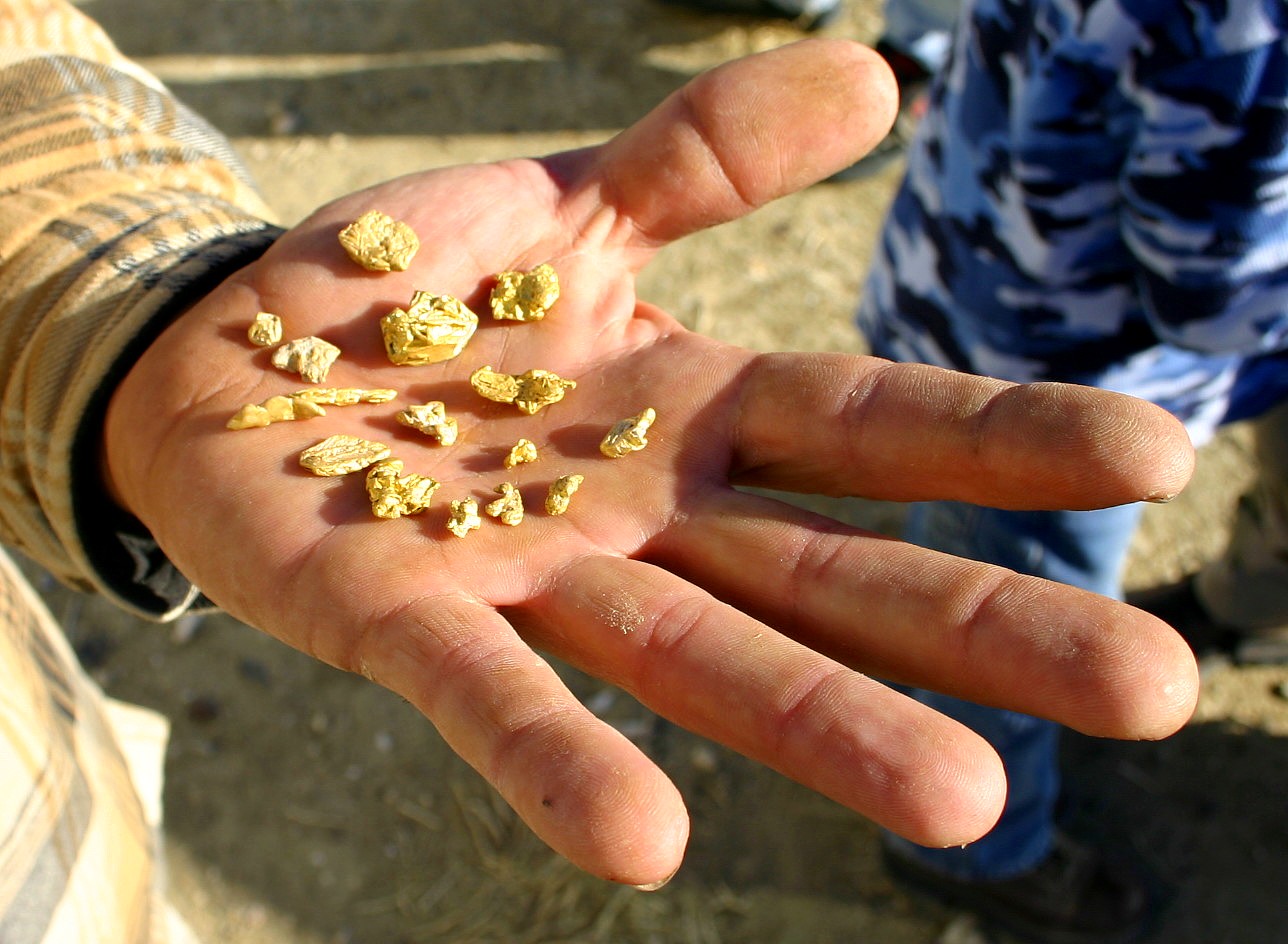Eolian placers are a special type of residual gold deposit that prospectors should be interested in because the gold is shallow and richly concentrated - a condition well suited to exploitation with a metal detector.
Eolian means formed by wind, and these deposits form in flat, arid areas where wind, not water, is the chief force that concentrates the gold, removing fine particles of clay and other light minerals. The gold in Eolian placers has moved very little and is concentrated right over or in the immediate vicinity of the primary deposits in the ground.
Here is an Eolian placer area in Western Australia. The surface is littered with small rocks very resistant to weathering. The black rocks are banded iron and the white ones are quartz. This spot was a nice patch that yielded some good nuggets.
Most prospectors are well aware of alluvial gold deposits where the forces of water wash away lighter materials and concentrate the gold on bedrock. In some places the bedrock is shallow and amenable to metal detectors, but commonly much alluvial gold is out of reach - buried under meters of sand and gravel overburden. The great thing about Eolian or windblown gold deposits is that the very process is one which concentrates gold at or near the surface of the ground.
Many rock forming minerals like mica and feldspar are eventually converted to clays by the forces of weathering, and clays are easily blown away in the wind. Other minerals like quartz, which are not so easily converted to clays are also removed by wind so long as the particles are small like sand. There is also some removal of the soluble elements of certain minerals that form salts by leaching. Where there is no opportunity for liquids to drain away, water soluble mineral matter may become concentrated as salt flats. In the case of rocks which contain large amounts of calcium (like limestone) the soluble part may re-solidify just below the surface as cemented caliche gravel (referred to as calcrete in Australia).
Larger chunks of things that do not easily weather away like quartz or ironstone accumulate on the surface, eventually accumulating to the point where the pebbles protect the surface and further wind erosion is greatly slowed down. In the western US, we call this desert pavement - a condition where the ground is covered by resistant pebbles which the wind cannot move. Sometimes this also concentrates hot rocks, which makes the use of a detector resistant to mineralization important. Any nugget patches found in arid locations with flat or gently sloping topography and concentrations pebbles on the surface are nearly always of Eolian formation.
Some of the characteristics of Eolian gold deposits are:
1) They form over stable land surfaces of great age, and these tend to be flat as surfaces that are steep and uplifted are worn away by water. Wind can dominate as an erosion force only where the land surface is fairly flat and level. It does not need to be perfectly flat, just mostly level.
2) They form only in arid regions because a substantial vegetative cover will protect the surface from wind erosion.
3) They form slowly because wind does not remove materials quickly - the Eolian process is much slower than water.
4) That the gold is rough and ragged, often very shallow, even visible on the surface as sunbakers. Because these deposits form very near the gold source, there is often more gold underneath, but scraping can be frustrating - the original wind enriched surface is much richer than the underlying material.
Here is some gold from a well-known Eolian placer area in the state of Nevada in the US. Gold detected from Eolian placers has not travelled far, and is often sharp edged and may show crystal patters as in the nuggets shown here. Well-formed and preserved crystals like these are valued at much more than the gold metal price.

Eolian gold deposits are found all over the planet, including eastern Europe and Siberia; in the desert portions of North America including the US, Mexico and Canada; South America; Africa; in the Mongolian goldfields of Asia and of course in Australia, but they are especially important in Australia, Africa, Asia and Russia. Most of the patches I visited in Western Australia were enriched by wind erosion, as were the gold locations I have visited in Africa. There are also a number of these locations in which I've found gold in the desert parts of the US, including places like Rye Patch in my home state of Nevada. With the new detection technologies developed by Minelab, prospectors all over the world are waking up to the possibilities of these deposits that really are best found and worked with a metal detector.
Being able to ignore hot rocks and mineralization while finding both large and small gold will give the prospector the greatest chances of success while searching both for new Eolian patches, and when cleaning out the locations of known ones. Minelab's SDC 2300 and now the new GPZ 7000 are designed to find all types of gold and the flexibility of these powerful metal detectors will optimize all prospectors’ chances for finding Eolian gold.
So the next time you are out in the desert on a windy day and see dust blowing through the air, just remember it's another good nugget patch in the process of formation.




















Comments
To make comments you must be logged in, please note comments will not display immediately due to moderation